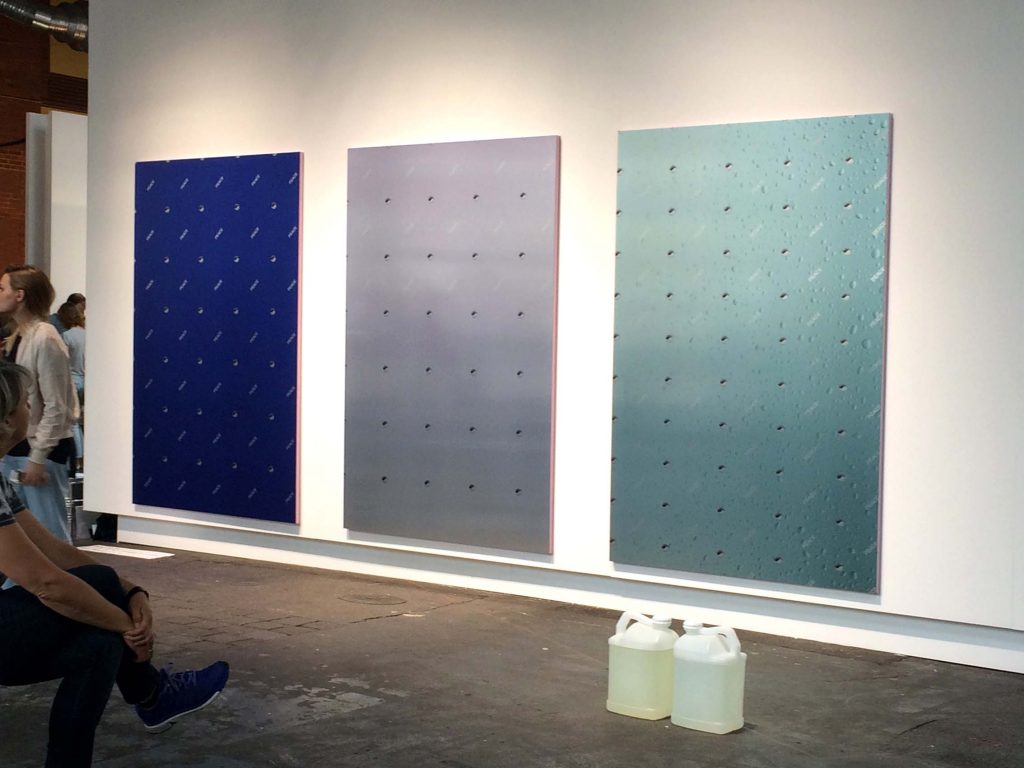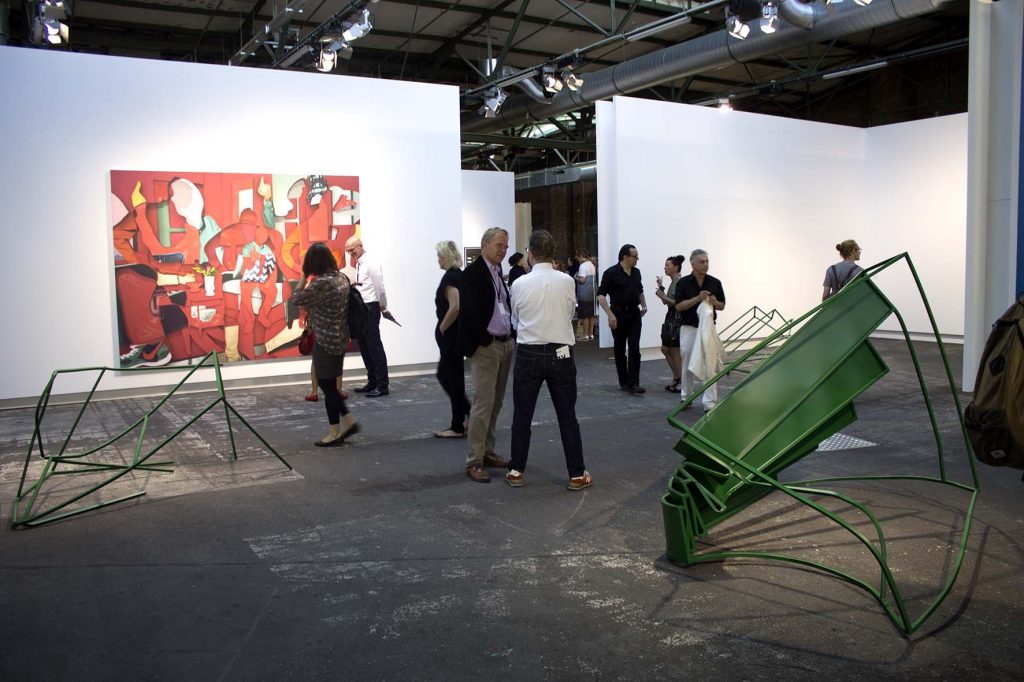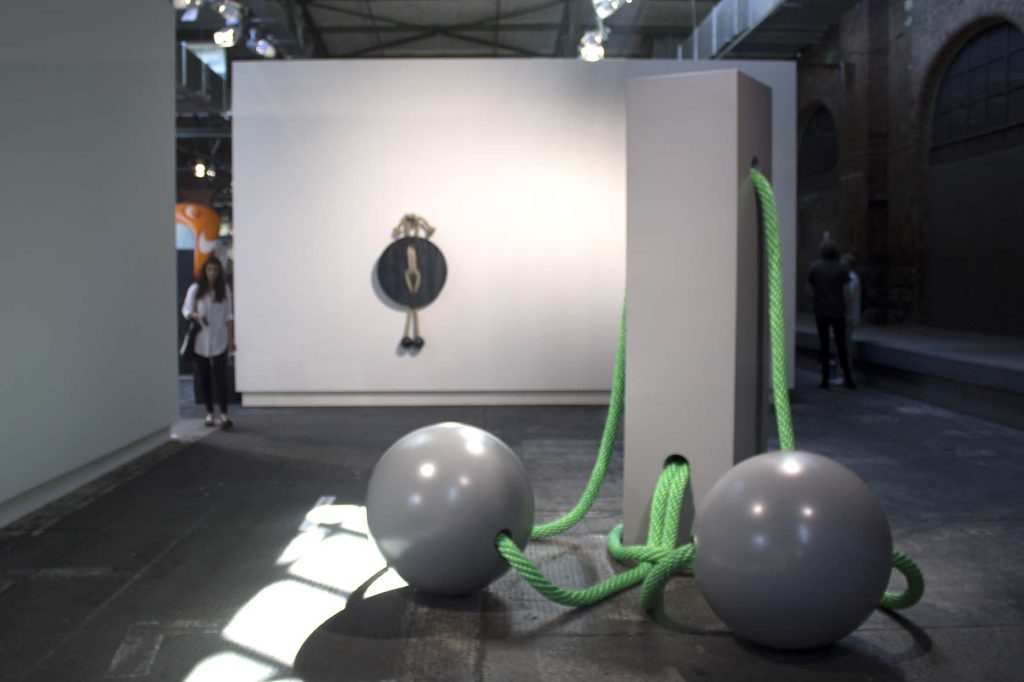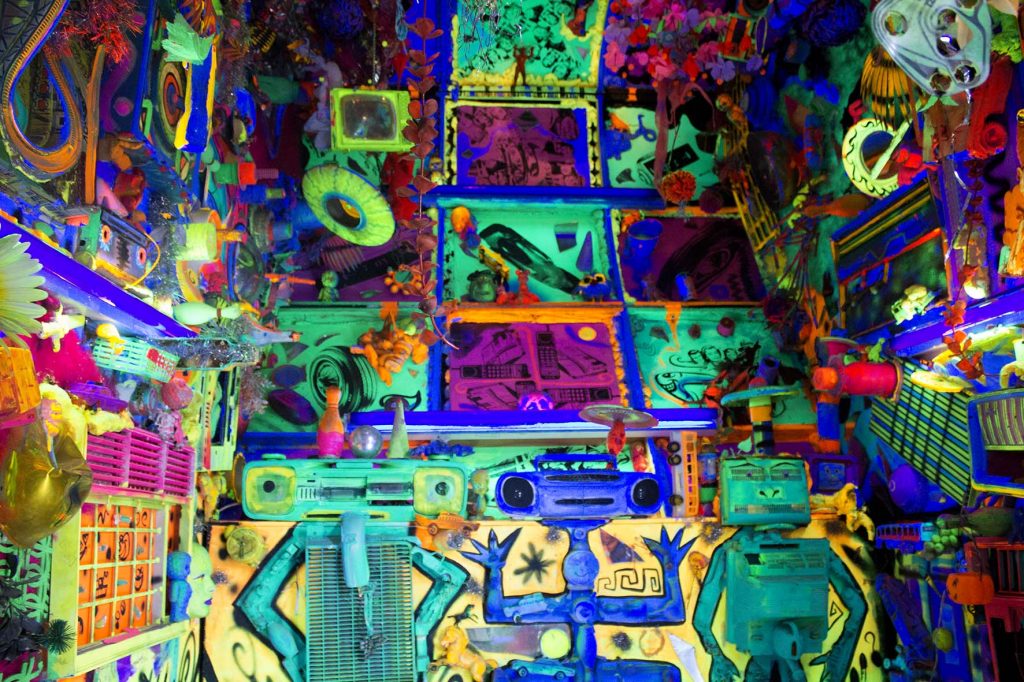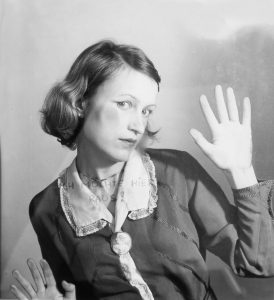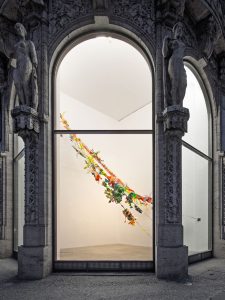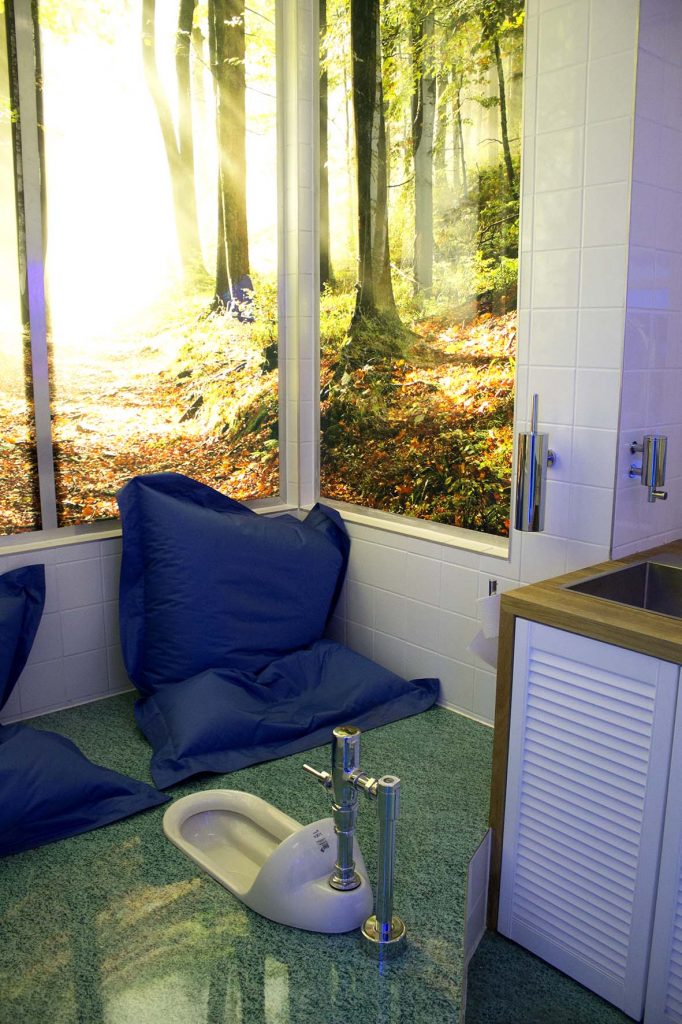On October 5th, Gallery Quest organized a gallery visit in the Potsdamer Straße area for a lovely group of Berlin ladies. We started our tour on the Schöneberger Ufer at Aurel Scheibler where we saw the hyper realistic paintings by Scottish artist Neil Gall (1967). His paintings mainly consist out of holes, cut out of colored pieces of paper and then layered over each other. Any one with a kid recognizes this kind of left over pieces of scrap material. Gall has some fun with them.
 |
| Neil Gall @ Aurel Scheibler |
Although his subject matter seems kind of simple (with a great effect I might add), Gall’s paintings stand in a very long, and may be even the longest, painterly tradition. In fact, painting nature as true as possible was the wager in an ancient Greek painting duel between the two rivals Zeuxis and Parrhasius, who lived in the 5th century BC. The anecdote was noted down by Pliny the Elder (died 79 AD) in the Naturalis Historia and tells the tale of each of them delivering a painting to prove their worth.
Zeuxis had painted a still life with a bowl of fruit, so life like that a dove tried to steal a grape. Having fooled the bird, Zeuxis was confident of his victory and walked over to Parrhasius’ painting, that was hidden behind a curtain. As he reached out to draw it aside, he couldn’t… it was a painted curtain. Although Zeuxis fooled an animal, Parrhasius had fooled Zeuxis, a man and fellow artist.
Nowadays we call paintings like Neil Galls photo realistic which is actually a funny name, because what could be more realistic than reality itself?
 |
| Ugo Rondinone @ Esther Schipper |
The link with this famous Romantic painter is the clue to the interpretation of the room. For Friedrich, the inner eye was as important in the creation of a work as the outer one. After making sketches in nature, he retreated into his studio, where he finished the painting, using his inner world as well as the outside sketch.
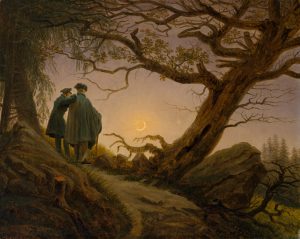 |
| Caspar David Friedrich, Two Men Contemplating the Moon, ca. 1825-30, 34.9 x 43.8 cm, Metropolitan Museum of Art, NY |
Rondinone does the same. The windows, as a quite literally reference to the boundary between inside an outside, are now closed of and presented as objects. The corner stones refer to the actual outside living area of the artist in Harlem, NY. And the painted wall is an accumulation of past memories. Painted in thick impasto strokes on pieces of sowed together burlap, we recognize bricks. According to the press text, Rondinone’s first studio in NY had one window, that looked out upon a brick wall. His father being a bricklayer and his mother a seamstress, this painted wall sculpture seems to bring it all together.
After going back into art history, our third stop is hard core contemporary art. In Future Gallery, dutch artist Constant Dullaert (1979) presented his Facebook army on a wall, which he build with bought identities.
 |
| Constant Dullaert @ Future Gallery |
The possibility of an army presents how easy it is to create fake accounts. All that Facebook wants from you is a phone number, to prove you actually exist. And those can be bought very cheaply, in bulk, in countries like the Philipines, or India, or Sri Lanka. It shows that even identities have become a commodity.
And although we know it is nonsense, a like a day seems to keep the doctor away: it can really influence your mood. But it can also influence your income. So why not create some more likes and artificially crack up your popularity? Businesses, (wannabe) pop stars, politicians, apparently everyone is doing it.
With his Facebook army, which got a lot of attention in the media, Dullaert protests against the importance placed on a thumbs up in our current attention fixated society. The artist planned to use his army of likes for interesting artists who could use a boost, and even considered some kind of ethics comity, who would decide whether you would qualify to get the likes by his army yes or no. Unfortunately, like many fake profiles, his army has also been removed by Facebook.
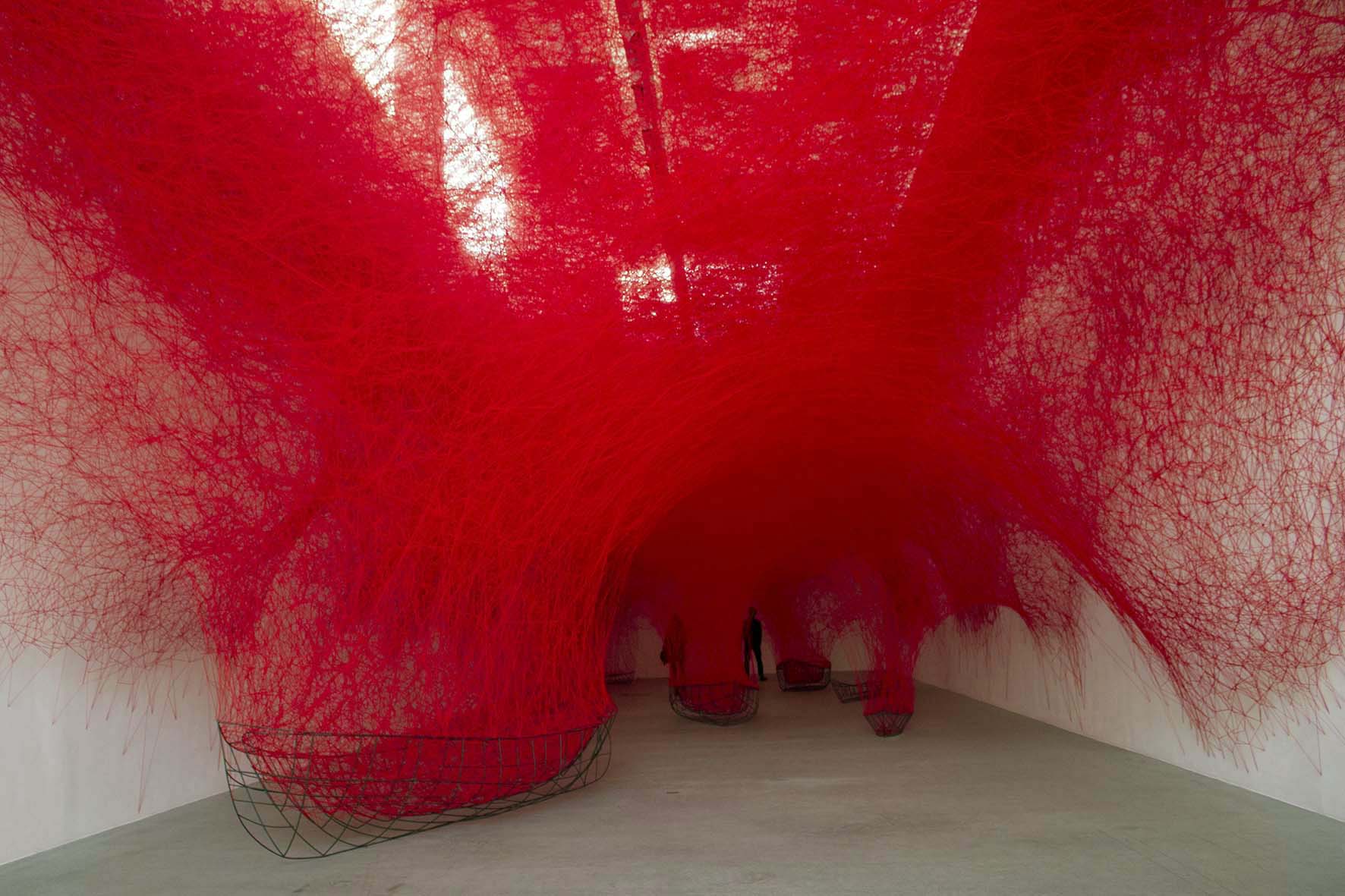 |
| Chiharo Shiota @ Blain/Southern |
Blain Southern provided us with a chance to recuperate from all this contemporaneity and dive under the see (or under the stars?) in the spectacular installation by Japanese artist Chiharo Shiota (1972) called Uncertain journey. In three weeks time, with the help of 10 assistants, the artist wove a web of red yarn working it’s way up into the gallery space.
Last summer in the Japanese pavilion in the Venice Biennale, Shiota made a similar installation. They each offer lots of clues for both positive and negative associations. The boats hint to the notion of travel, but at the same time you can’t look at a boat without thinking of the refugee crisis. The threads and the weblike structure hint to the outside (invisible) data network that surrounds us but could also be our internal blood circulation. For Shiota it is all about remembrance. She weaves in the things that are important and should not be forgotten during the life journey, as referred to in the title, which we all take without knowing where we will end up.
Our final stop is the new project space and latest addition to the Potsdamer Straße gallery mile, WNTRP, run by Wentrup Gallery. I am really excited they opened a pilot space here, because their program (as well as their space on the Tempelhofer Ufer) is great but a bit of the beaten track and very difficult to fit into a gallery walk.
 |
| Hicham Berrada, Les Fleurs, film still |
The first exhibition shows work by Moroccan artist Hicham Berrada (1986) who uses science as his palette and chemical processes as his paint brush to create poetic installations and performances. The installation Les Fleurs shows the use of a magnet on little parts of iron in a liquid. They are moved by a zest of wind and then quickly return to their original position, like a shoal of fish chased by a dolphin.
What we see is a split second, slowed down to several minutes. so actually we witness something that is normally, impossible to see.

